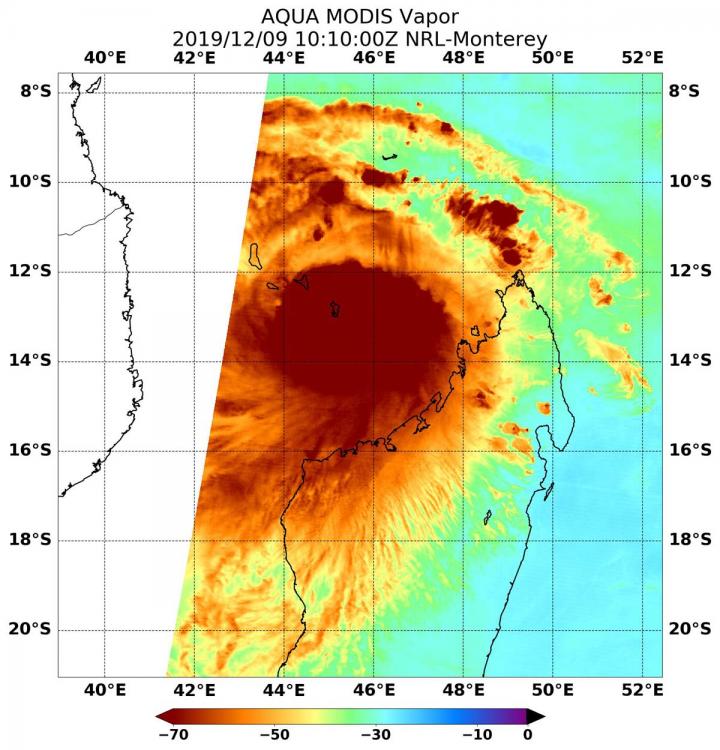
Credit: Credits: NASA/NRL
When NASA’s Aqua satellite passed over the Southern Indian Ocean, water vapor data provided information about the intensity of Tropical Cyclone Belna.
NASA’s Aqua satellite passed over Belna on Dec. 9 at 5:10 a.m. EST (1010 UTC) and the Moderate Resolution Imaging Spectroradiometer or MODIS instrument gathered water vapor content and temperature information. The MODIS image showed highest concentrations of water vapor and coldest cloud top temperatures were encircling the center. MODIS data also showed coldest cloud top temperatures were as cold as or colder than minus 70 degrees Fahrenheit (minus 56.6 degrees Celsius) in those storms. Storms with cloud top temperatures that cold have the capability to produce heavy rainfall.
Water vapor analysis of tropical cyclones tells forecasters how much potential a storm has to develop. Water vapor releases latent heat as it condenses into liquid. That liquid becomes clouds and thunderstorms that make up a tropical cyclone. Temperature is important when trying to understand how strong storms can be. The higher the cloud tops, the colder and stronger they are.
At 5 a.m. EDT (0900 UTC), Belna was located near latitude 14.6 degrees south and longitude 45.6 degrees east, about 550 nautical miles northeast of Europa Island. Belna is moving south-southwest toward northwestern Madagascar. Maximum sustained winds are near 80 knots (92 mph/148 kph).
Forecasters at the Joint Typhoon Warning Center expect Belna will move south-southwest and continue weakening before making landfall in northwestern Madagascar near Soalala by Dec. 9 at 1800 UTC (1 p.m. EST) with maximum sustained winds expected near 75 knots (86 mph/139 kph).
NASA’s Aqua satellite is one in a fleet of NASA satellites that provide data for hurricane research.
Tropical cyclones and hurricanes are the most powerful weather events on Earth. NASA’s expertise in space and scientific exploration contributes to essential services provided to the American people by other federal agencies, such as hurricane weather forecasting.
For updated warnings from METEO Madagascar, visit: http://www.
###
Media Contact
Rob Gutro
[email protected]
Original Source
https:/




